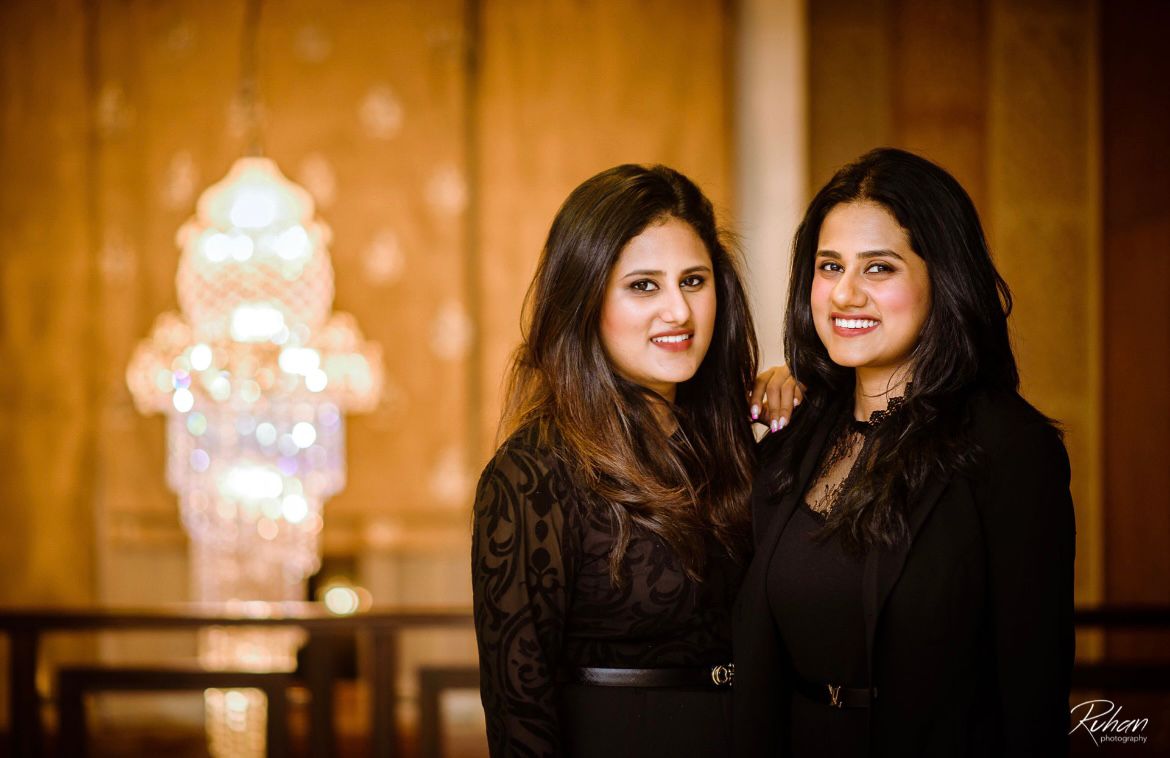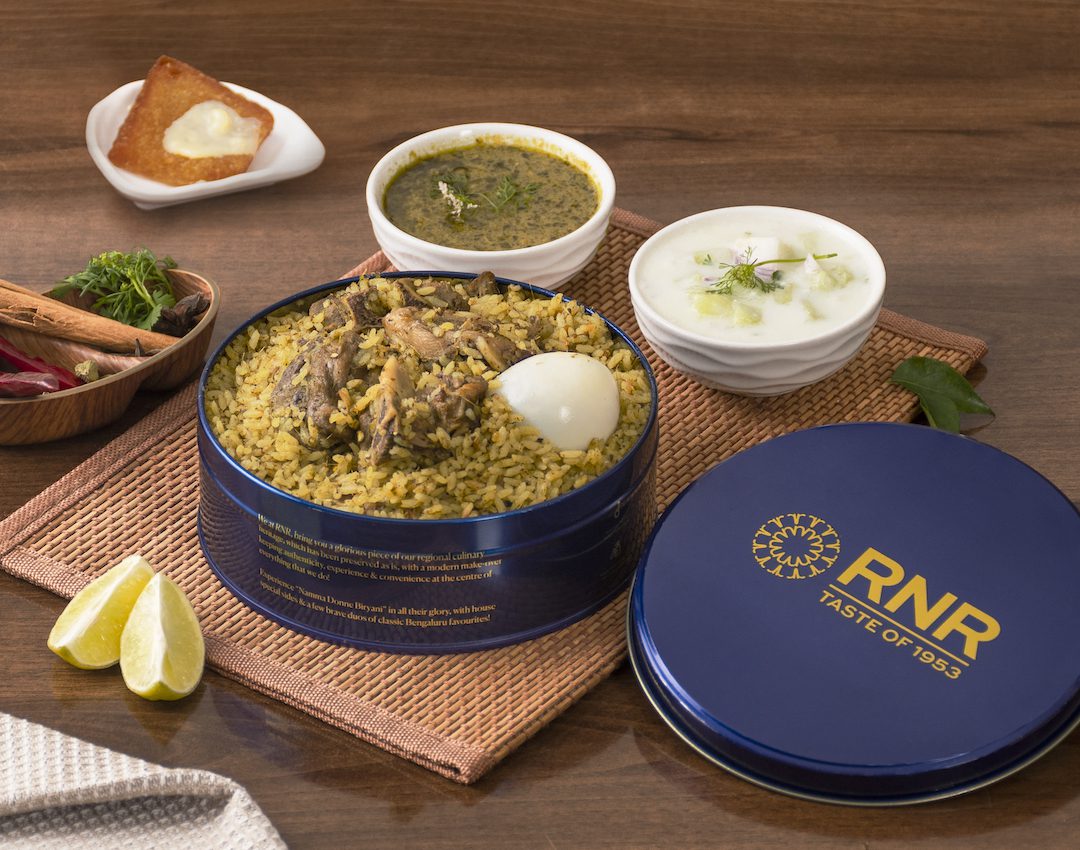(March 13, 2022) Growing up Ramya Ravi remembers feasting on the fragrant donne biryani whipped up by her grandmother. With each grain of the jeera samba rice coated in her secret blend of masalas and aromatic herbs, the greenish hued biryani left behind memories of its lusciousness long after it had been demolished. But the entrepreneur wondered why the donne biryani that filled her childhood with its deliciousness failed to enjoy its moment in the sun pan India like the Hyderabadi or Lucknowi biryanis. It was this desire to popularise the typically Karnataka style of biryani that led the Harvard alum to launch RNR Biryani as a cloud kitchen bang in the middle of the pandemic.
However, the entrepreneur’s gamble paid off and today, RNR is a hugely profitable enterprise with dine in restaurants too.
What started off as a cloud kitchen with an investment of ₹5 lakh in late 2020 is now a flourishing business clocking in a turnover of ₹10 crore. With a considerable presence across Bengaluru, RNR Biryani is set to spread its branches to neighbouring states this year. The fact that it was launched in the midst of a pandemic and managed to successfully grow at a time when the hospitality and F&B industries took a hit, makes it a unique story of spotting an opportunity at the right time.

Ramya Ravi with her sister Shweta
Born in Bengaluru into a family that owns a chain of hotels, Ramya and her two sisters – Shweta and Raveena – were always encouraged to be independent and come into their own. “We were always taught that it was all about what we brought to the table as individuals,” says Ramya, who schooled at The Valley School before doing her B.Com from Christ College.
“My father would always share stories of successful women entrepreneurs with us from early on,” says Ramya, who went on to do a short-term management course from Harvard University. “As I watched my father work, it influenced me to get into the hospitality sector myself,” the 27-year-old tells Global Indian. She also pursued multiple internships with various establishments and also worked with her father R Ravichandar, which gave her more exposure into the hospitality and F&B industries.
“But I always wanted to start up on my own,” says the entrepreneur, who often wondered why naati style Karnataka cuisine wasn’t celebrated across India; specifically the donne biryani. She launched RNR Biryani (named after her father Ravichandar and grandfather Ramaswamy) in November 2020 along with her sister Shweta as a tribute to their grandmother’s recipe. “The whole idea was to make RNR Biryani a family affair and dedicate it to my father and grandfather.”

They first began as a delivery-only model from a 200 square feet space in Nagarabhavi in Bengaluru with a single cook, two assistants and an investment of ₹5 lakh. “What gave us the confidence to start up in the middle of a pandemic is the fact that we saw an opportunity to deliver good quality donne biryani at a time when people were ordering in a lot,” says the entrepreneur, adding, “Given that during the pandemic hygiene was paramount, we found very joints that could deliver a hygienically made donne biryani; most of them were the small local joints.”
That became RNR Biryani’s USP – hygienic, authentic naati style donne biryani. Packaged in a blue tin box, RNR Biryani soon became quite popular as the startup tied up with Swiggy for delivery and in their first month clocked in over 10,000 deliveries. Soon, they’d launched their second kitchen in JP Nagar and there was no looking back. A year later, in November 2021, RNR also opened doors to its first dine in restaurant in Bengaluru’s Jayanagar. Today, RNR also has a delivery radius that covers almost every corner of the metropolitan city.

So what is it that makes the donne biryani so unique when compared to other biryanis? To start off, it’s more robust in its flavours, says the entrepreneur. “Since it is made with jeera samba rice, as opposed to basmati, the rice itself absorbs the flavours of the masala and herbs very well.” The RNR offers its biryanis in chicken, mutton, and vegetarian variants along with a slew of sides and kebabs, ghee roast, tender coconut payasam and a fusion rasmalai cremeux. Another unique offering they’ve developed is the drumstick chilli, a hit with vegetarians and non-vegetarians alike.
“We also paid great attention to packaging and opted for tin boxes that also become collectibles. It turned out to be a talking point when we first launched our donne biryani in the market,” says Ramya, a trained Bharatanatyam dancer.
As RNR has made its way into the hearts of Bengalureans, Ramya is now set to take her offering to other states as well. “I want to make the naati style donne biryani as popular as the Hyderabadi biryani. The plan is to first introduce it to other South Indian states and popularise it there,” says the entrepreneur, who also loves to travel, explore new places and cuisines in her free time.
- Follow RNR Biryani on Instagram



